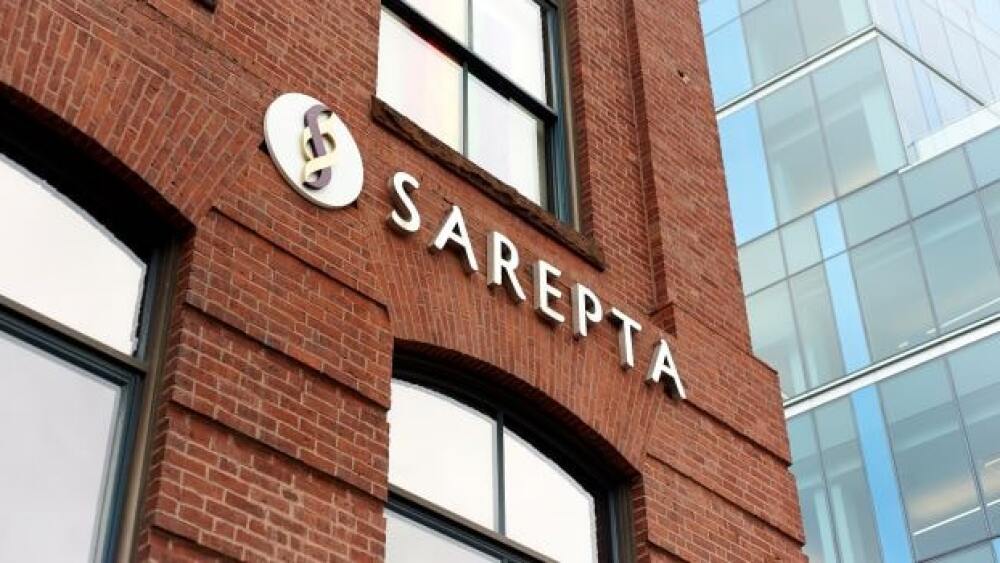Mallinckrodt plc , a global biopharmaceutical company, today announced that the U.S. Food and Drug Administration (FDA) has informed the Company that it is deferring action (pending a site inspection) on the Stratatech Biologics License Application (BLA) for StrataGraft ® , an investigational allogeneic cellularized scaffold product
|
DUBLIN, Feb. 12, 2021 /PRNewswire/ -- Mallinckrodt Pharmaceuticals plc, a global biopharmaceutical company, today announced that the U.S. Food and Drug Administration (FDA) has informed the Company that it is deferring action (pending a site inspection) on the Stratatech Biologics License Application (BLA) for StrataGraft®, an investigational allogeneic cellularized scaffold product in development for the treatment of adult patients with deep partial-thickness burns. This is due to COVID-19-related travel restrictions, which are delaying a required manufacturing site inspection. The Biomedical Advanced Research and Development Authority (BARDA), part of the Office of the Assistant Secretary for Preparedness and Response at the U.S. Department of Health and Human Services (HHS), has provided funding and technical support for the continued development of StrataGraft under Project BioShield Contract No. HHSO100201500027C. "We are confident in the efficacy and safety of StrataGraft for the treatment of deep partial-thickness burns based on our pivotal Phase 3 clinical trial results," said Steven Romano, M.D., Executive Vice President and Chief Scientific Officer at Mallinckrodt. "We plan to work closely with the FDA to complete the review and schedule its site inspection. We remain committed to the burn care community, with a goal of ultimately providing this patient population with a new treatment option that could reduce the need for autografting of healthy skin." The FDA granted the BLA for StrataGraft priority review. Previously, the FDA granted StrataGraft orphan drug status, and it was among the first products designated by the agency as a Regenerative Medicine Advanced Therapy (RMAT) under the provisions of the 21st Century Cures Act. About StrataGraft Mallinckrodt is currently conducting a StrataGraft continued access clinical trial (StrataCAT, NCT04123548) under an Expanded Access Program (EAP). The trial sites involved in the pivotal Phase 3 trial (STRATA2016, NCT03005106) have the opportunity to participate in this multicenter, open-label study. The company is planning to evaluate StrataGraft for the treatment of adults with full-thickness burns (also referred to as third-degree burns). Additionally, Mallinckrodt plans to conduct a study evaluating StrataGraft in the treatment of pediatric populations. StrataGraft is an investigational product, and its safety and effectiveness have not yet been established by the FDA. The continued development of StrataGraft, including the pivotal Phase 3 clinical study (STRATA2016), and the BLA process for StrataGraft in the United States, is being supported through a partnership with BARDA. These efforts are part of BARDA's strategy to build emergency preparedness in response to mass casualty events involving trauma and thermal burns by developing novel medical countermeasures for adult and at-risk populations. In the case of a mass casualty thermal burn event, the Government Accountability Office estimates that more than 10,000 patients might require thermal burn care.1 The limited number of specialized burn centers and related medical infrastructure in the United States creates a public health need for therapies that could be deployed quickly for use in these and other care sites. About Deep Partial-Thickness Thermal Burns Autograft is considered to be a standard of care by many for deep partial-thickness thermal burns. It involves the surgical harvesting of healthy skin tissue from an uninjured site on the patient and transplanting the skin graft to the injury. While this process can be effective in providing closure of the original wound, it has significant limitations related to the donor site wounds created during surgical removal of the skin tissue for grafting. Donor site wounds are painful and can create risks of additional scarring and infection. In addition, the amount of healthy skin available for harvesting is frequently limited in those patients with large burns, necessitating sequential re-harvesting of available donor sites. As a result, there is a need for alternatives to donor site harvesting for the treatment of severe burns. About Mallinckrodt Mallinckrodt uses its website as a channel of distribution of important company information, such as press releases, investor presentations and other financial information. It also uses its website to expedite public access to time-critical information regarding the company in advance of or in lieu of distributing a press release or a filing with the U.S. Securities and Exchange Commission (SEC) disclosing the same information. Therefore, investors should look to the Investor Relations page of the website for important and time-critical information. Visitors to the website can also register to receive automatic e-mail and other notifications alerting them when new information is made available on the Investor Relations page of the website. Cautionary Statements Related to Forward-Looking Statements CONTACTS For Trade Media Inquiries For Financial/Dailies Media Inquiries Investor Relations Mallinckrodt, the "M" brand mark and the Mallinckrodt Pharmaceuticals logo are trademarks of a Mallinckrodt company. Other brands are trademarks of a Mallinckrodt company or their respective owners. ©2021 Mallinckrodt. US-2001742 02/21. 1 United States Government Accountability Office. National Preparedness: Countermeasures for Thermal Burns. https://www.gao.gov/assets/590/588738.pdf. Accessed February 4, 2021.
SOURCE Mallinckrodt plc |
||
Company Codes: OTC-PINK:MNKKQ |





